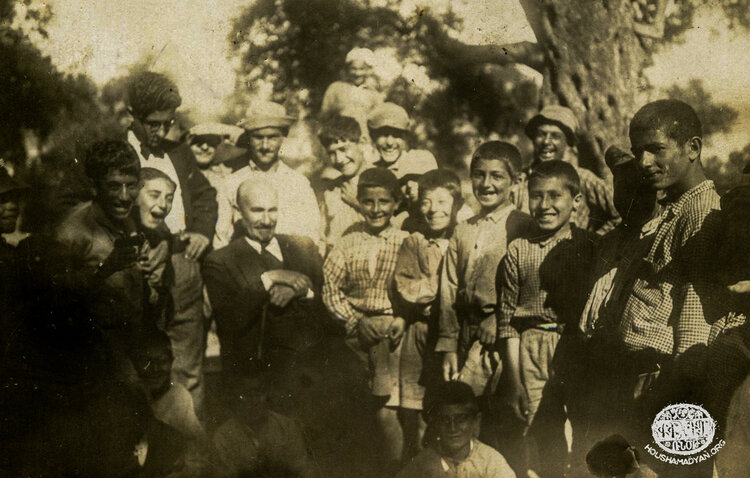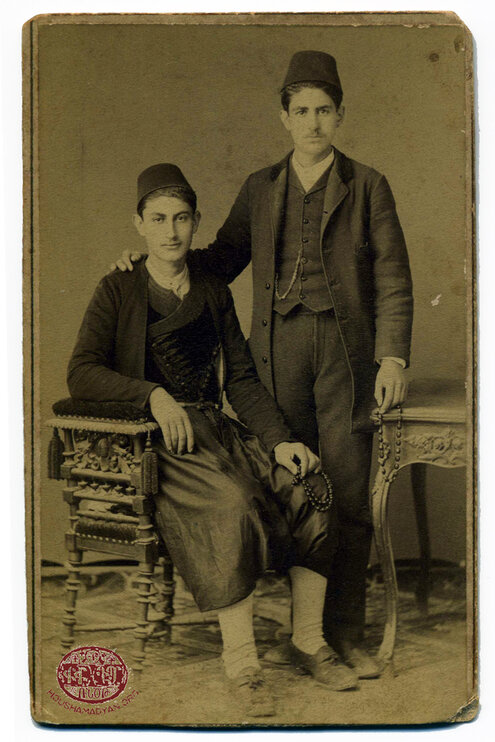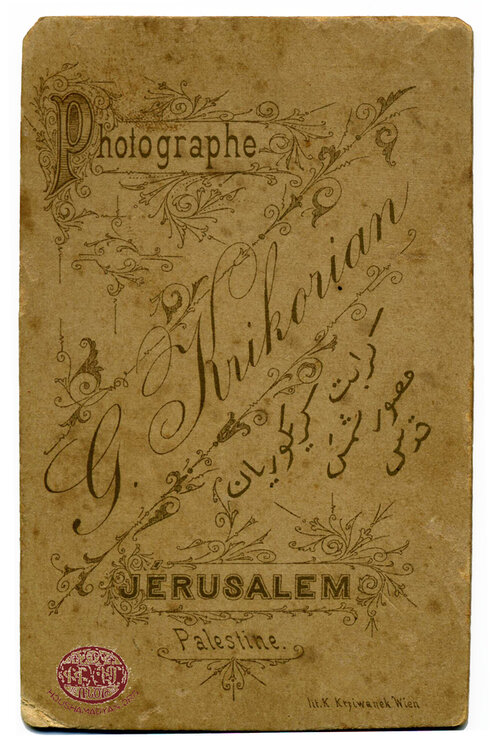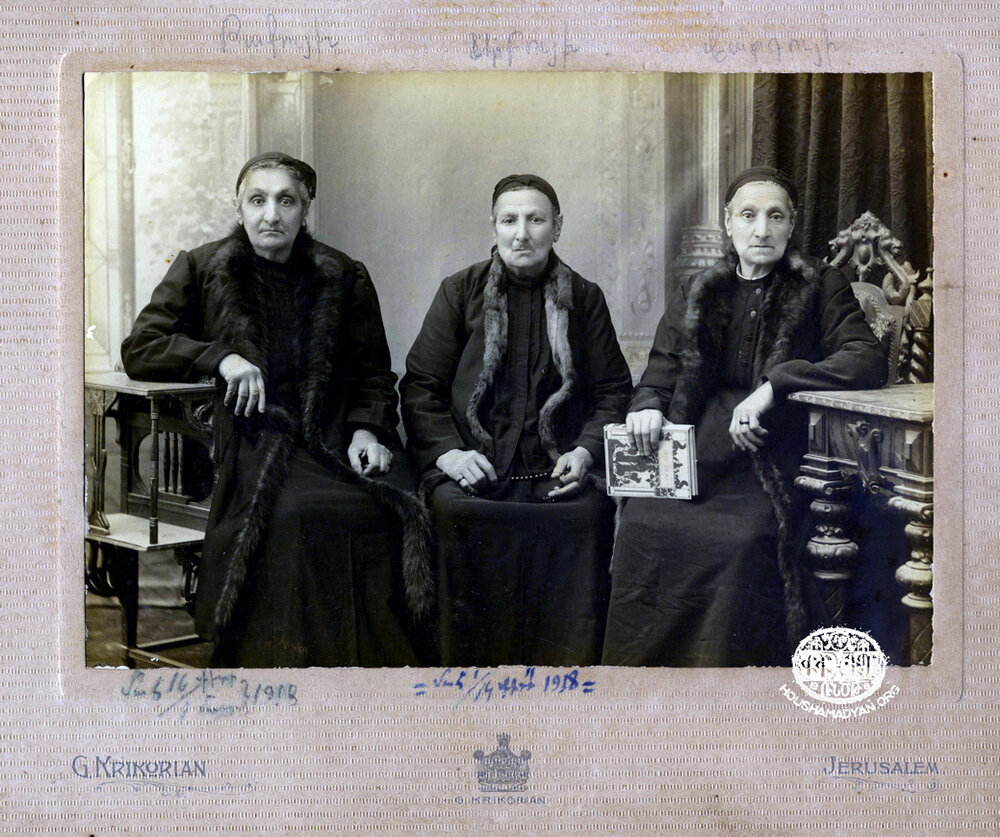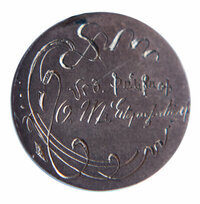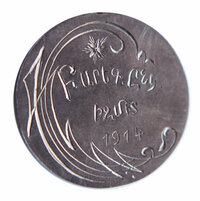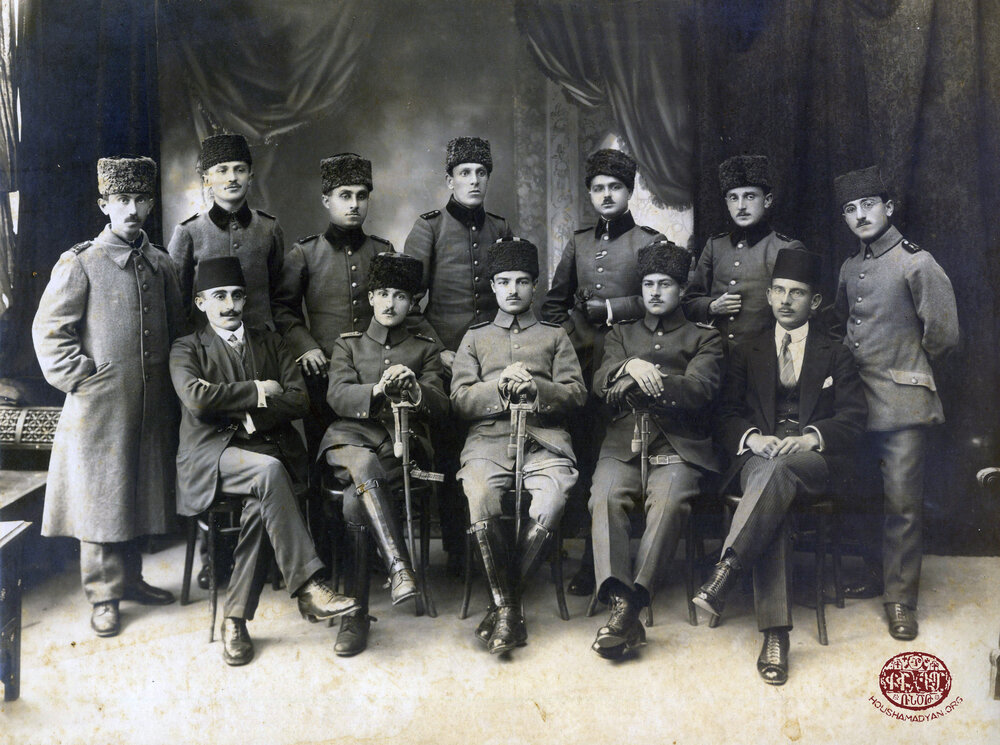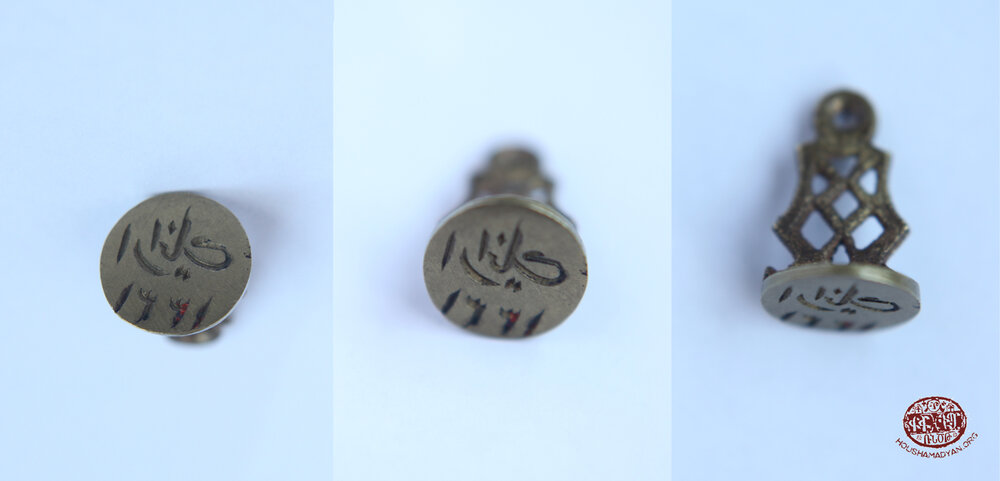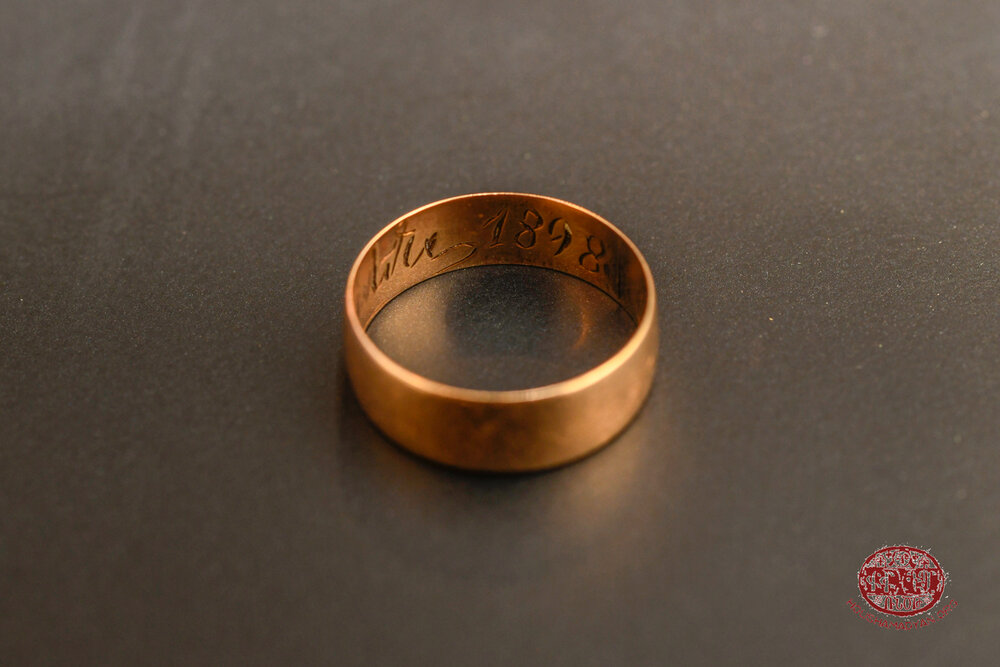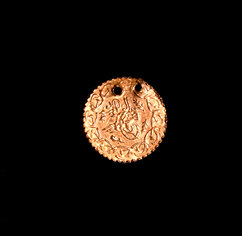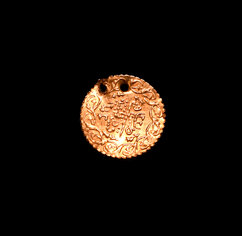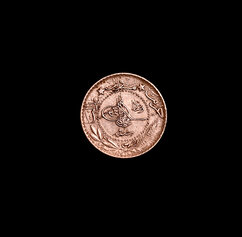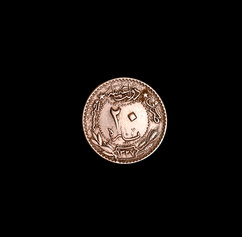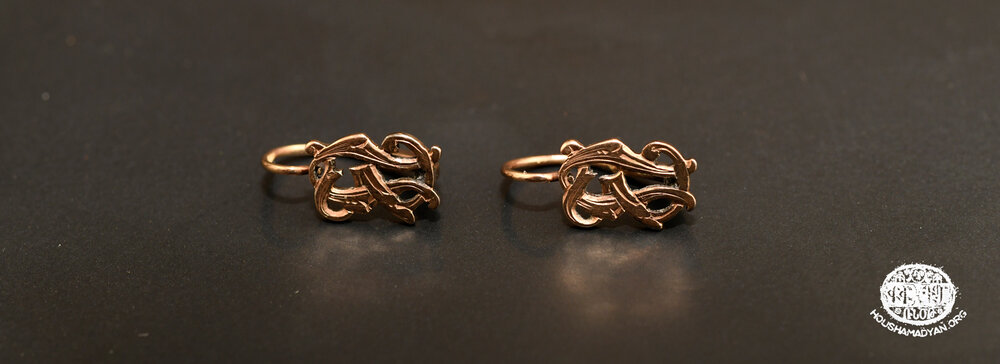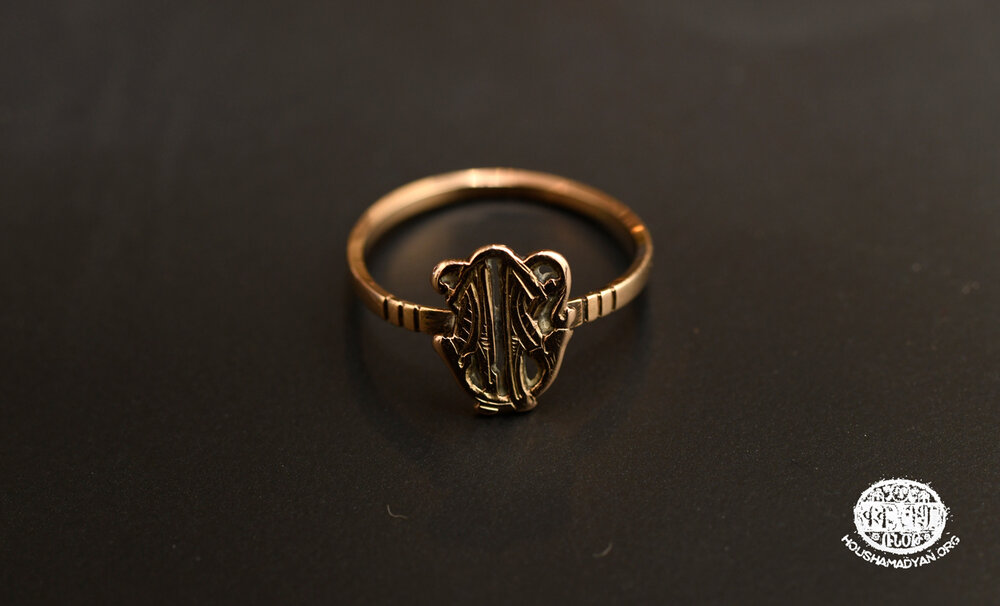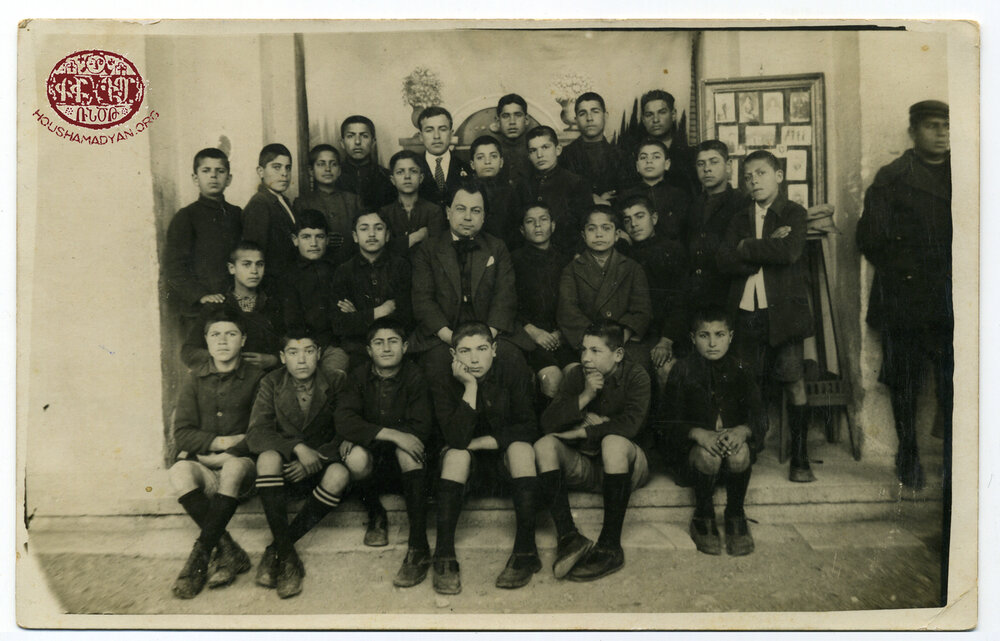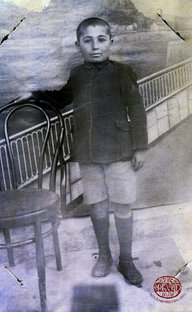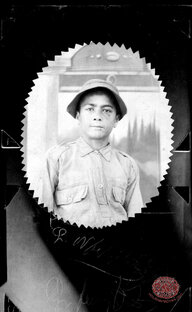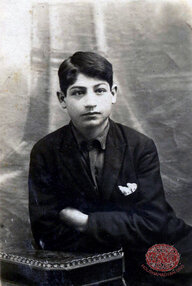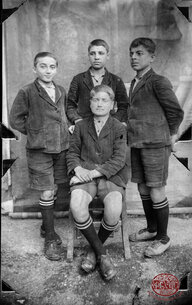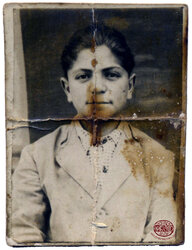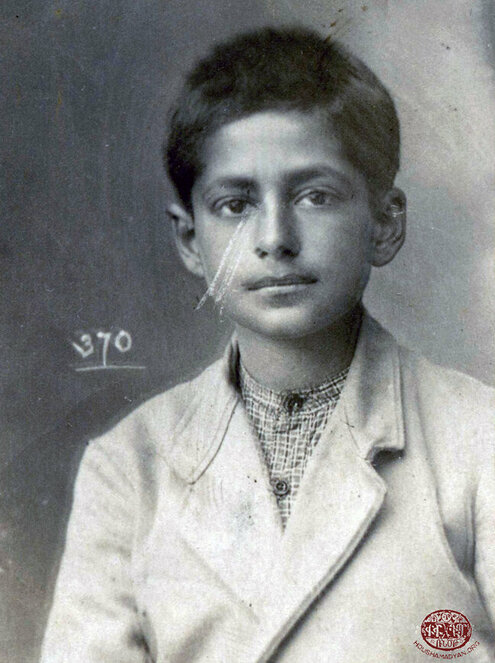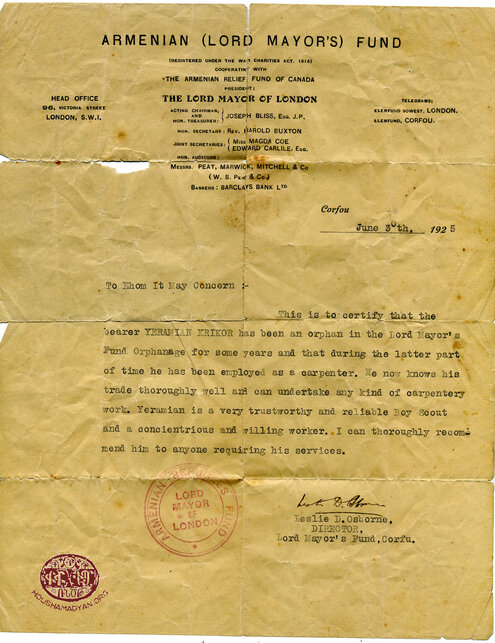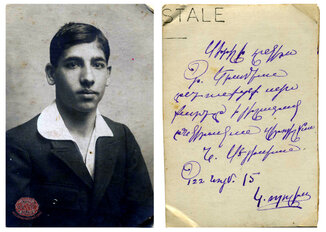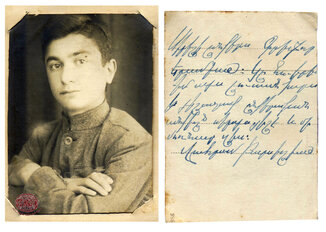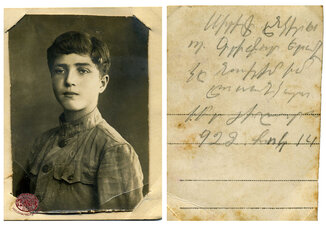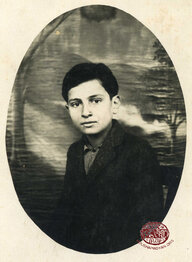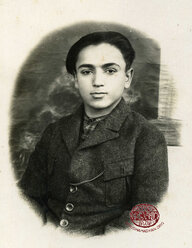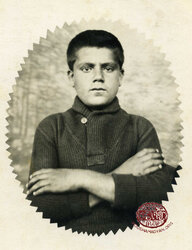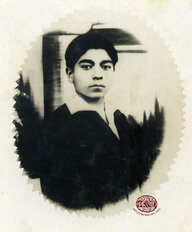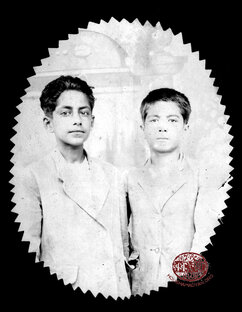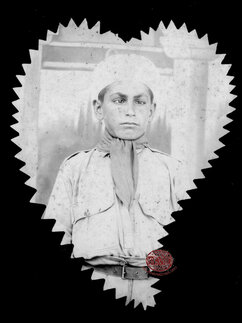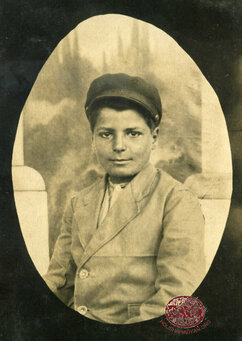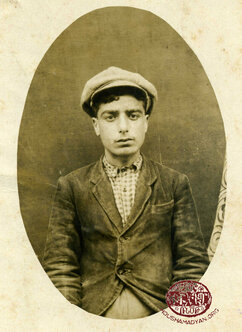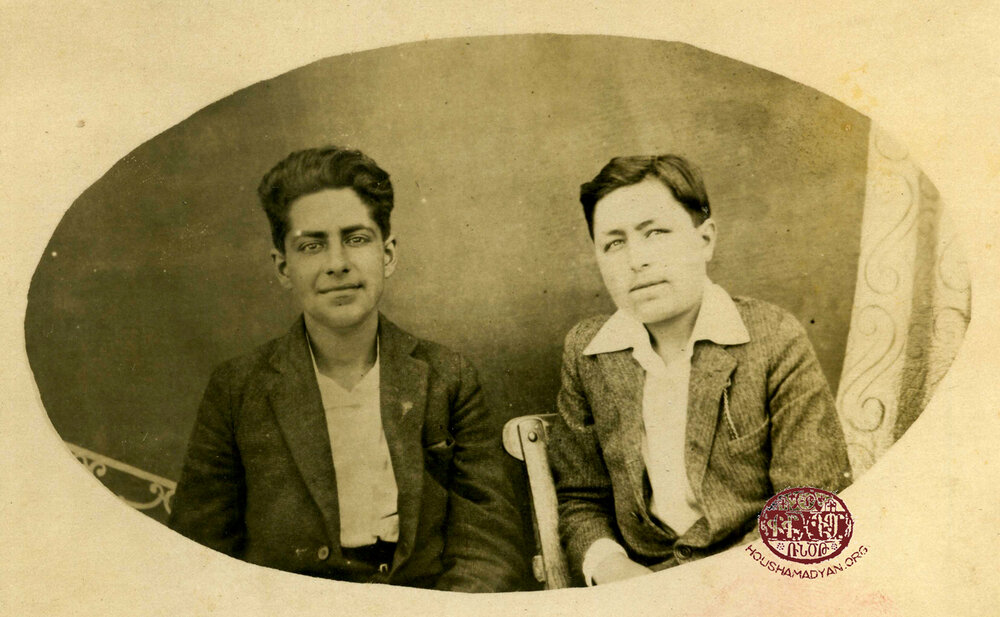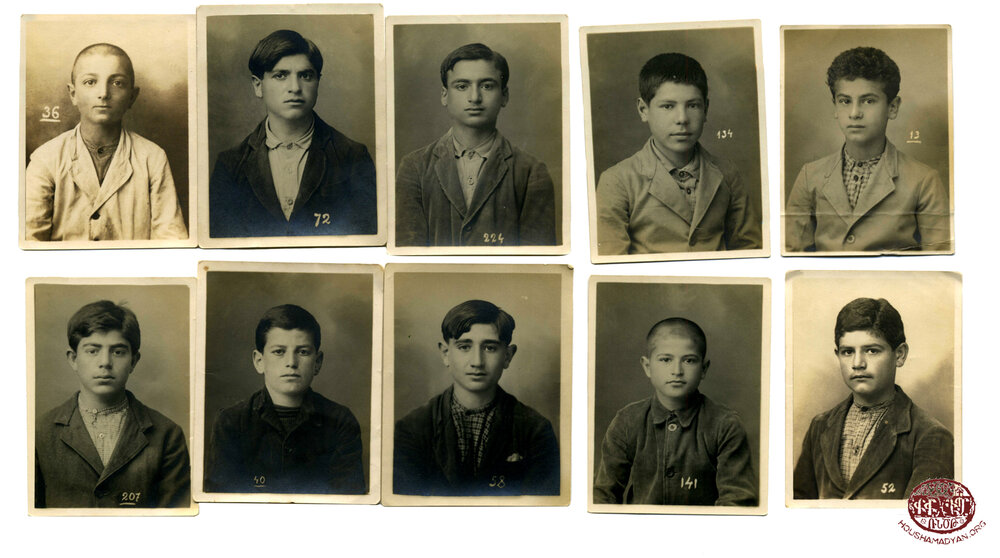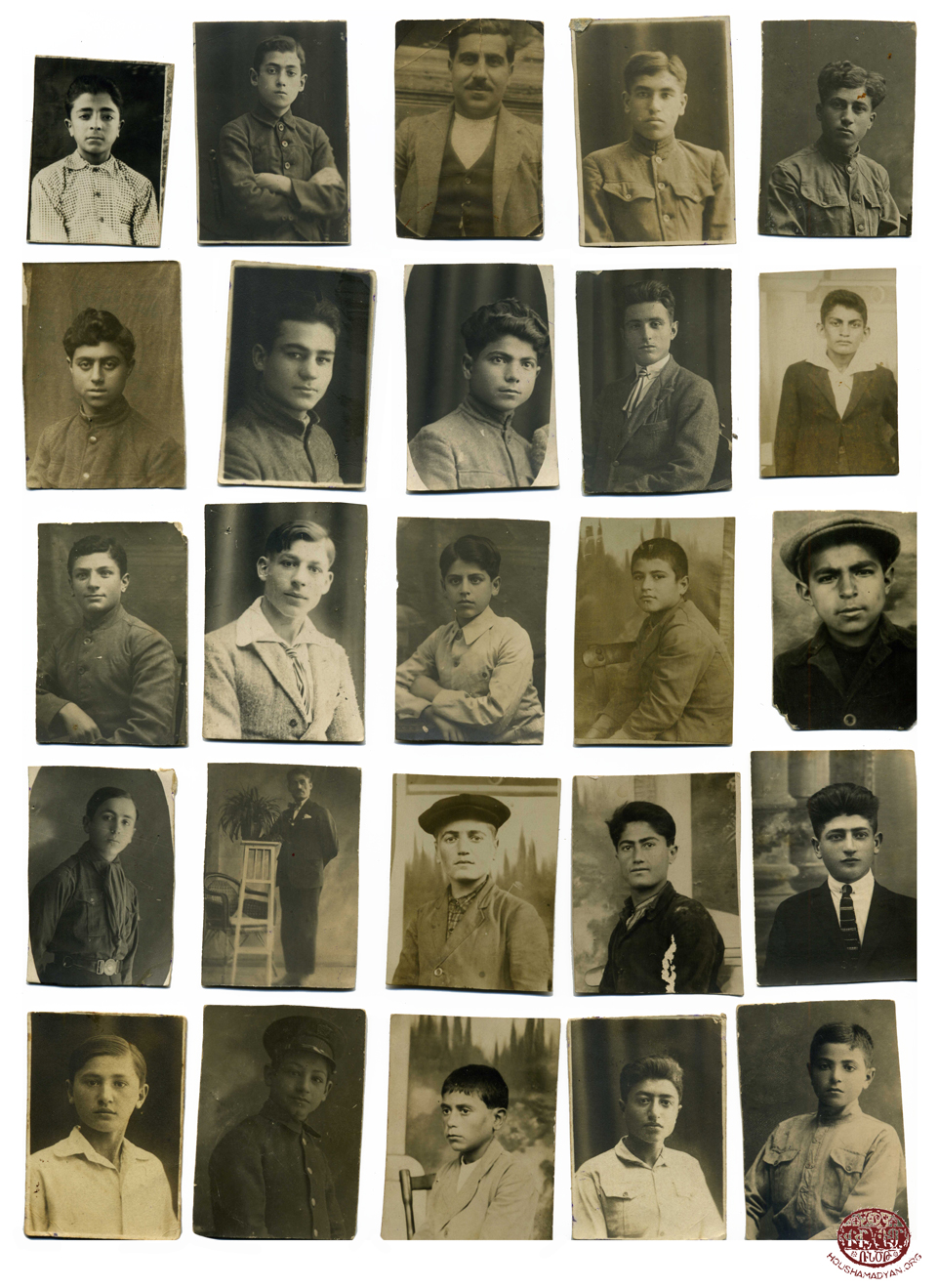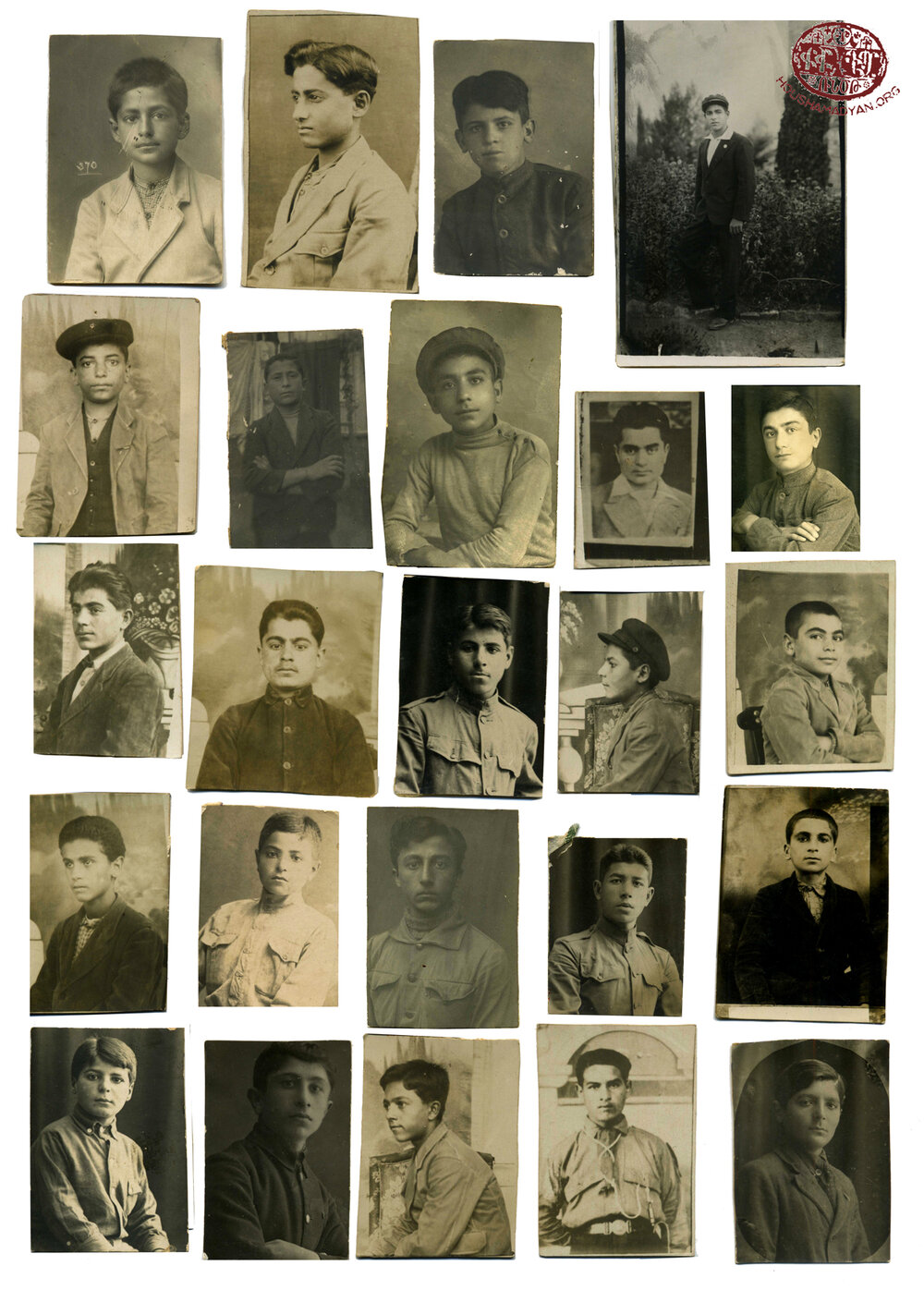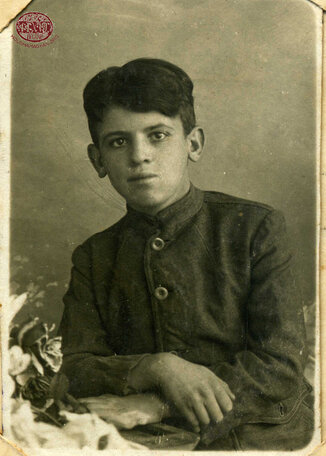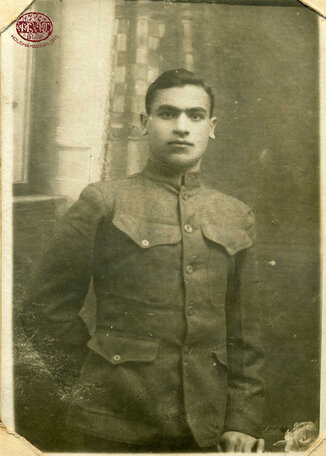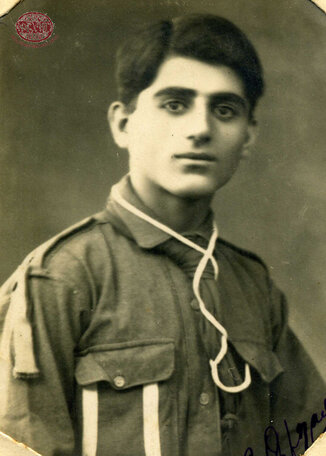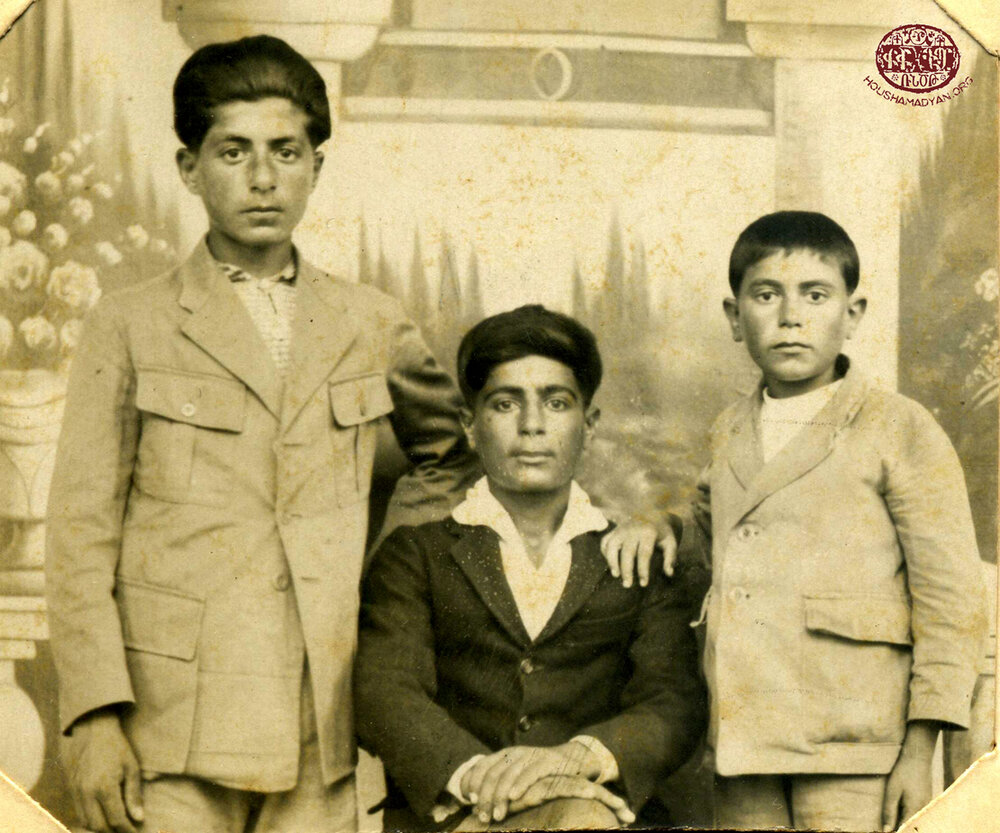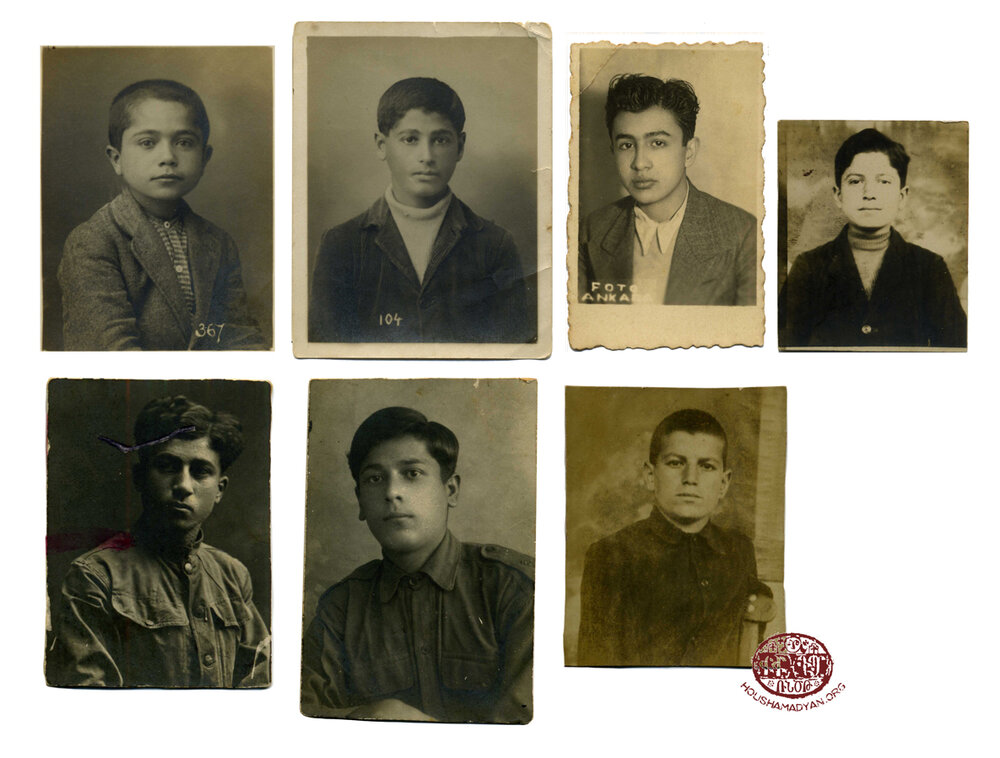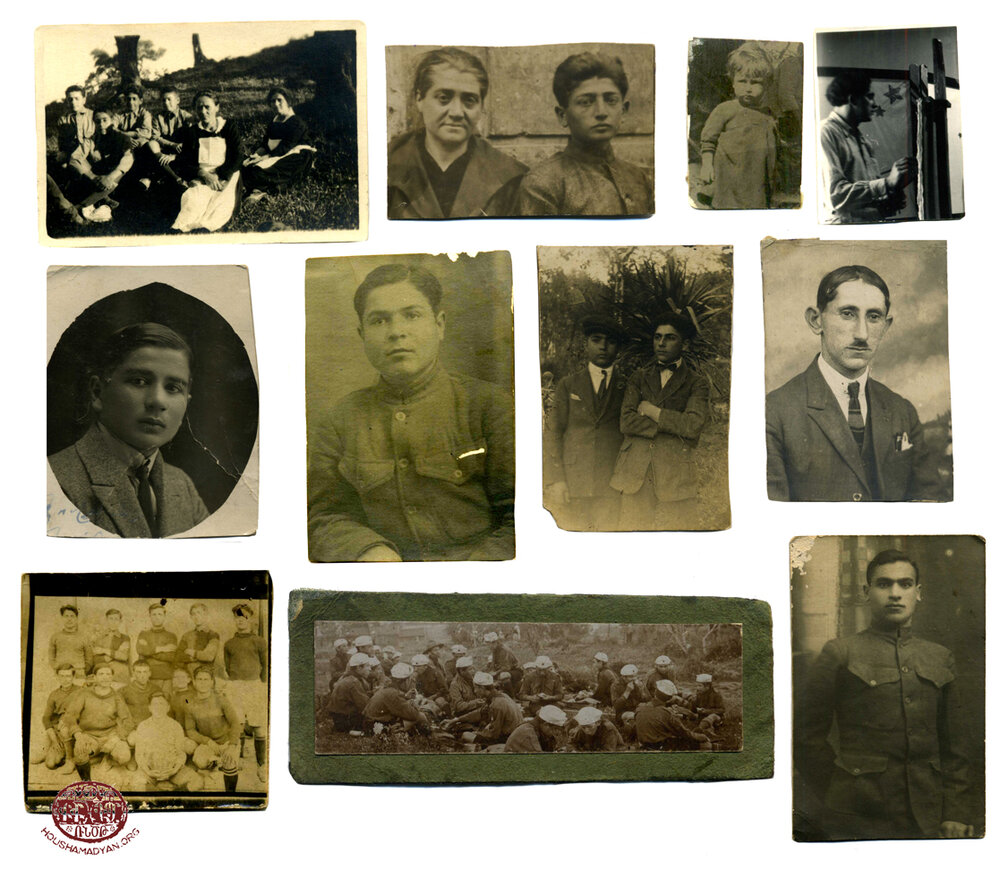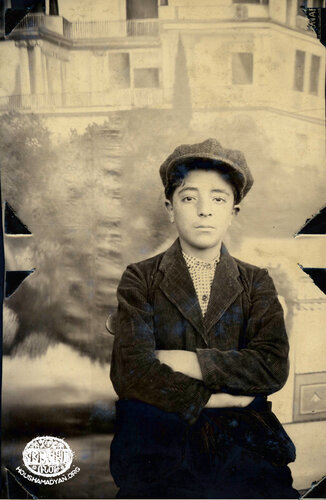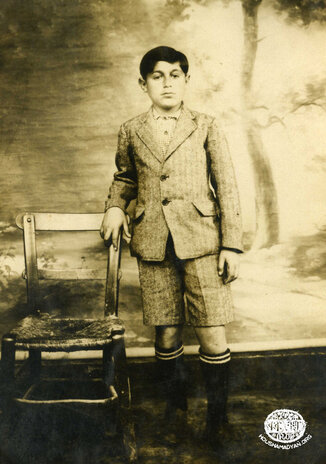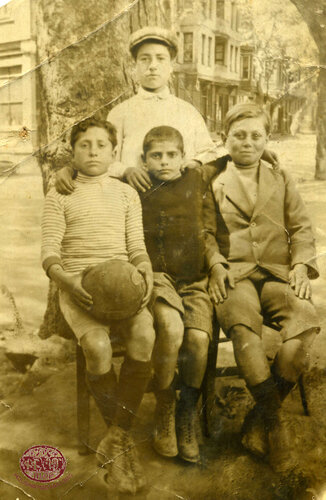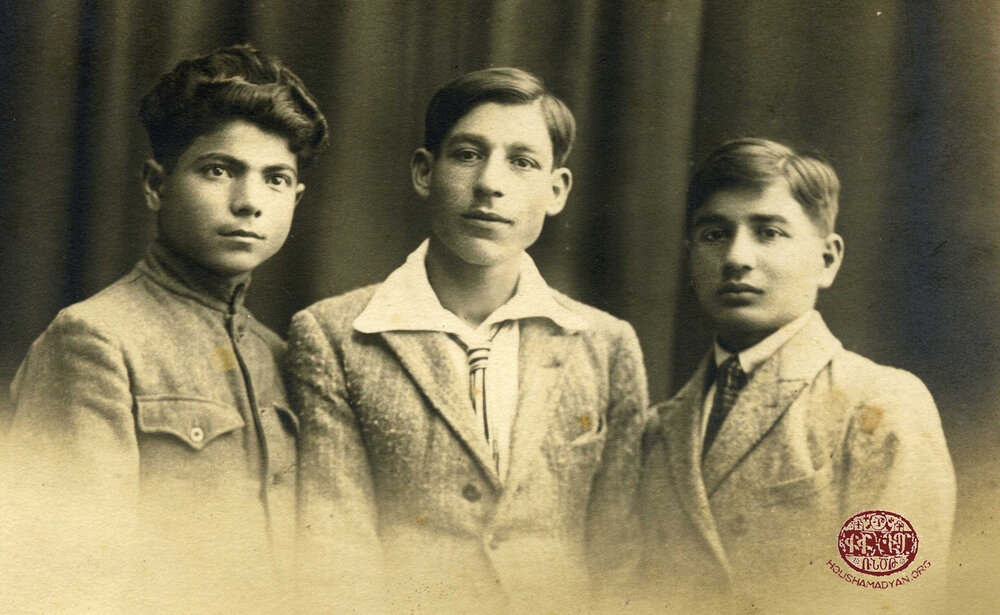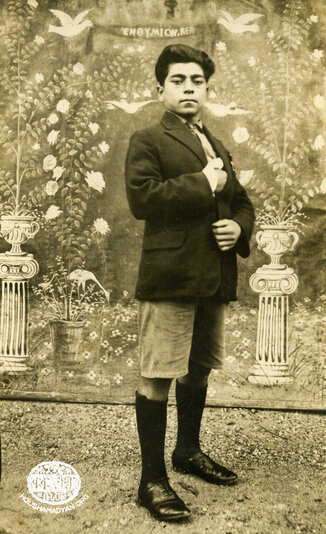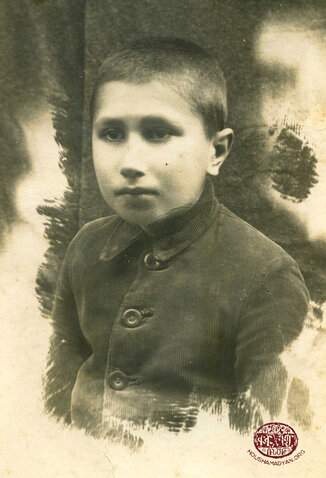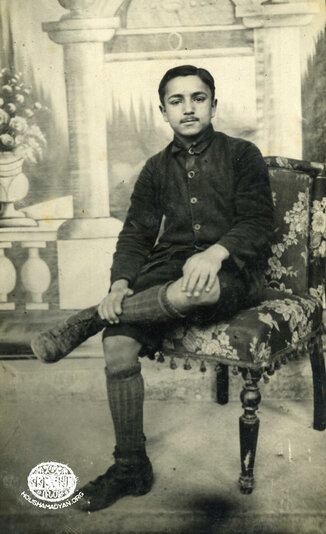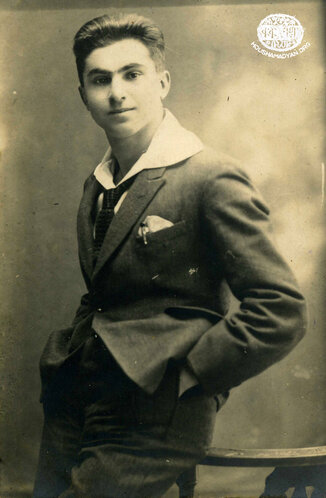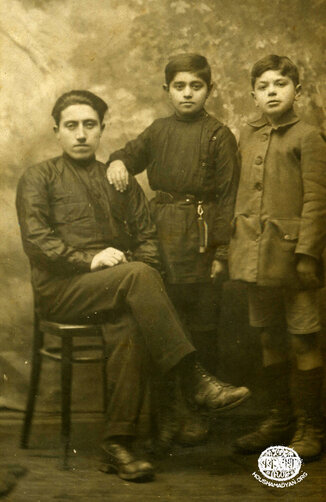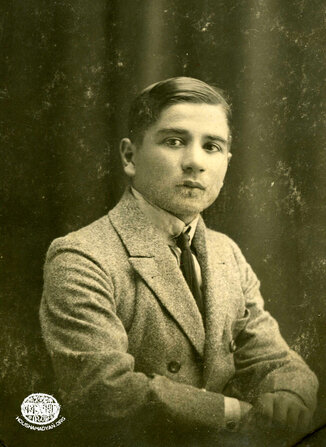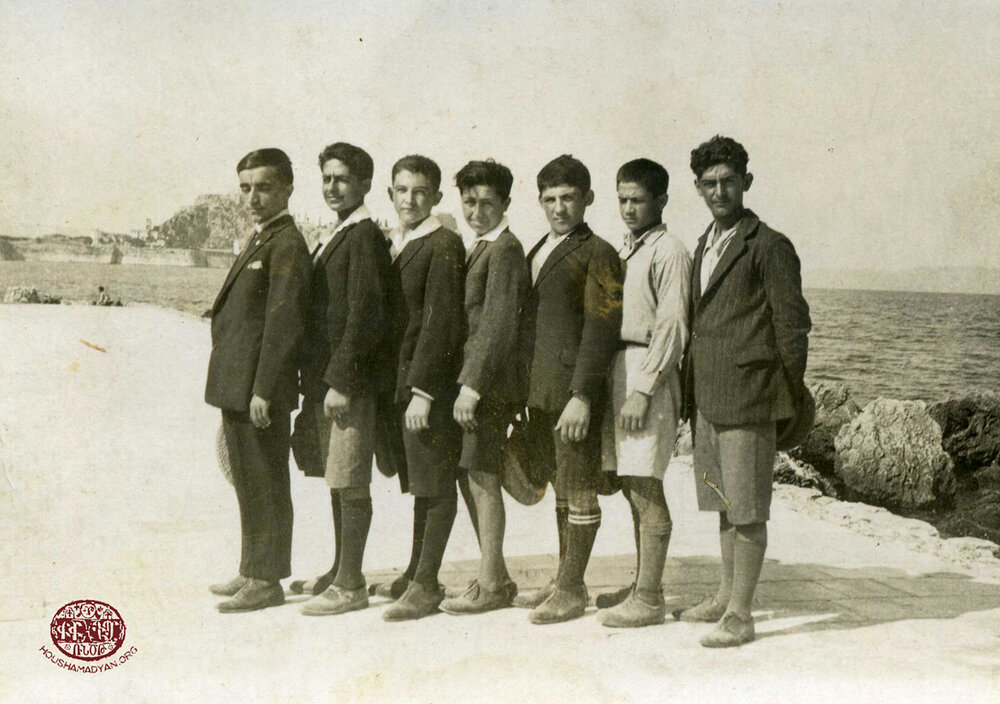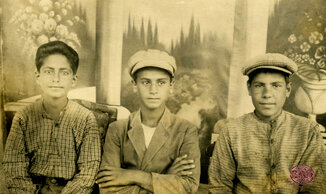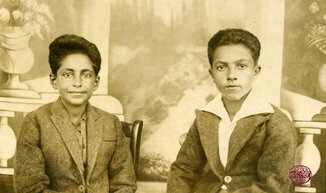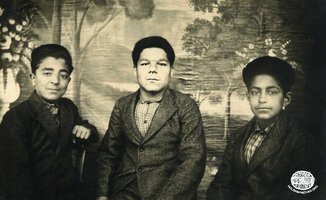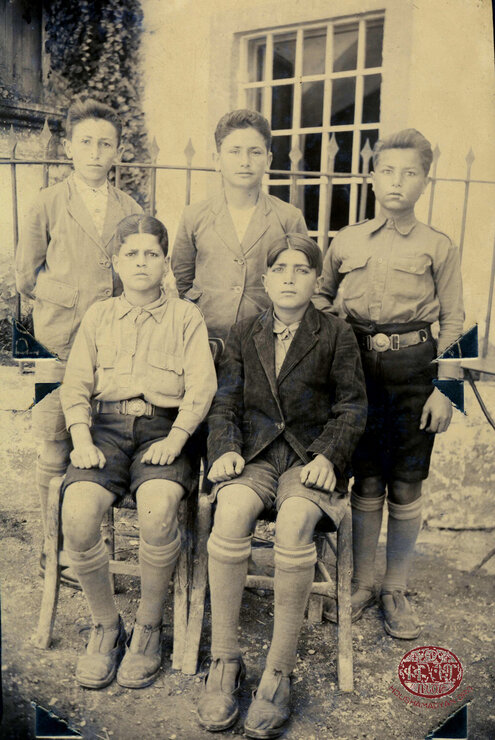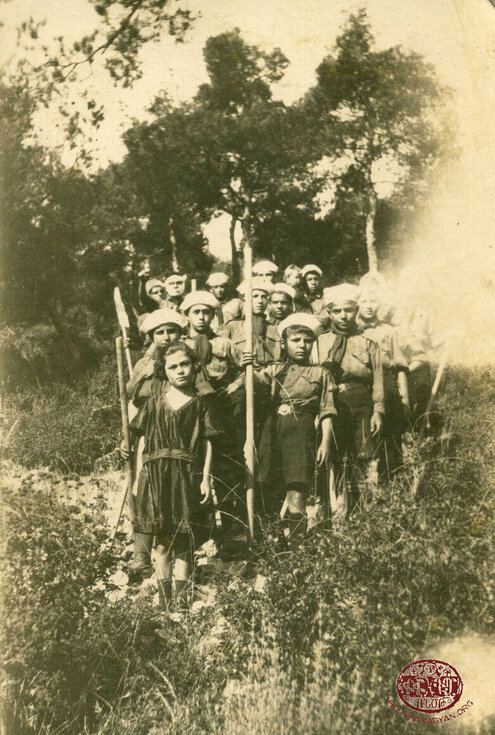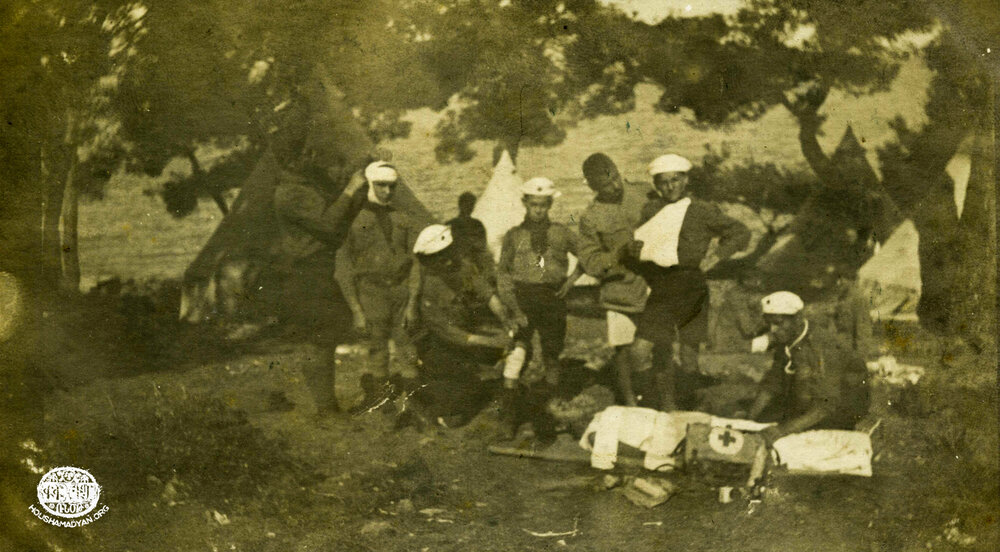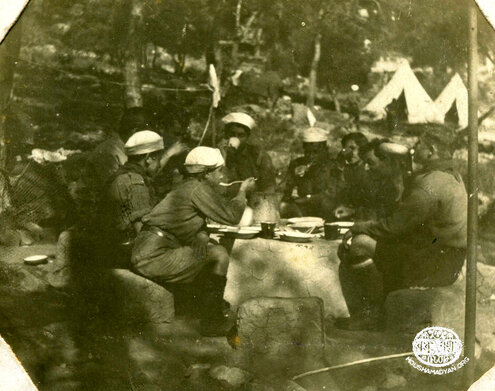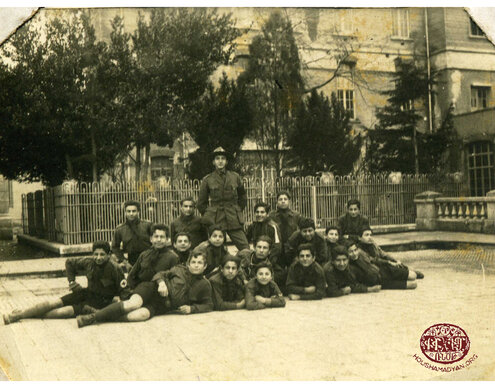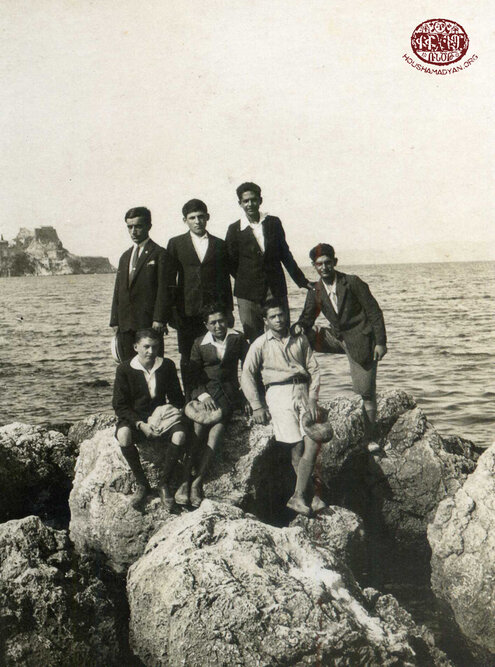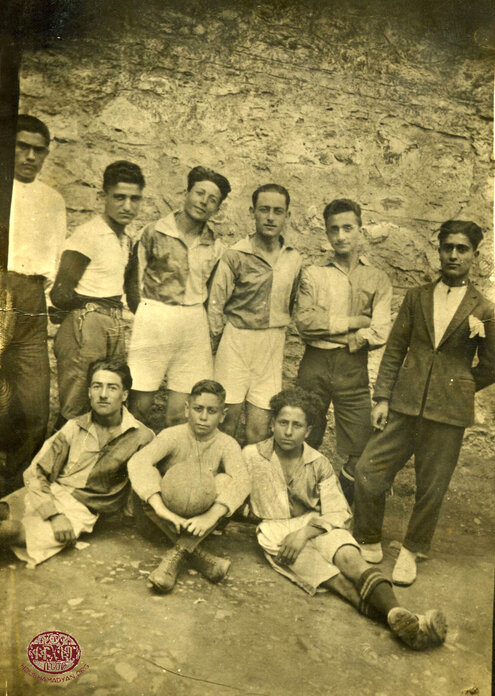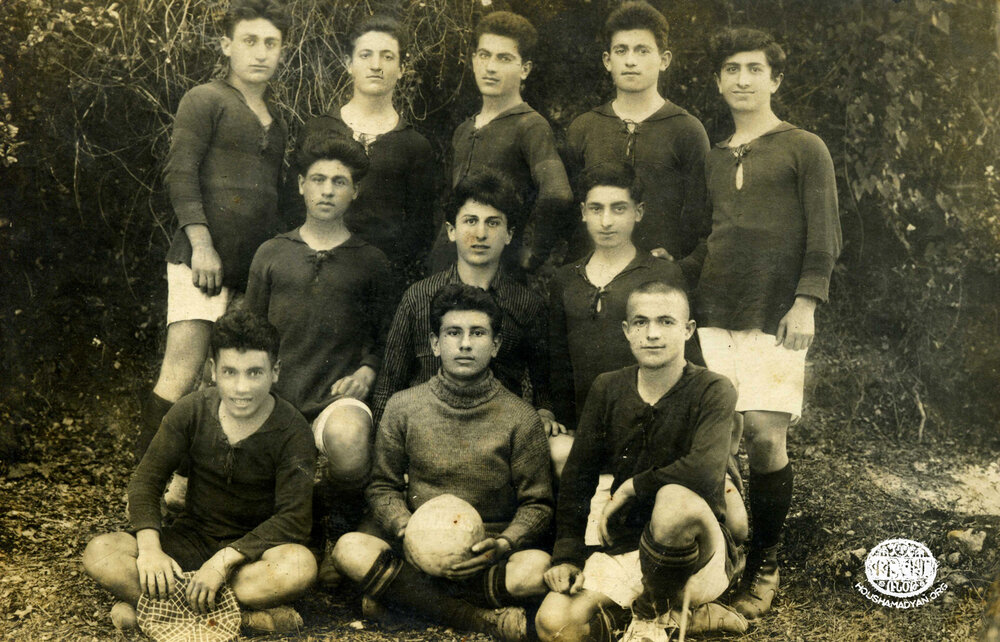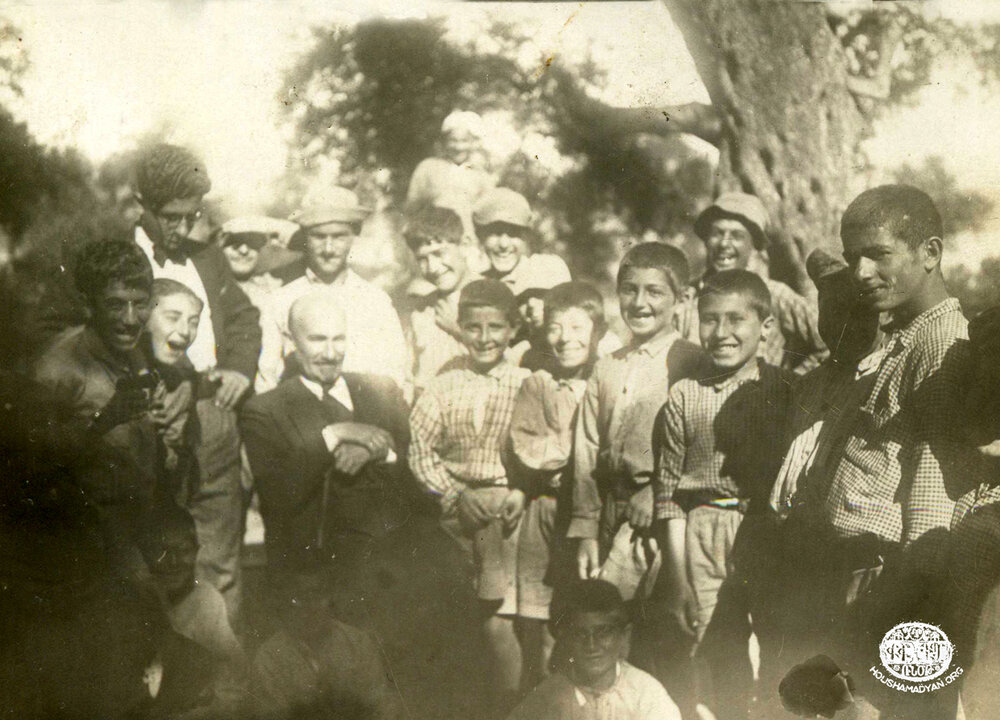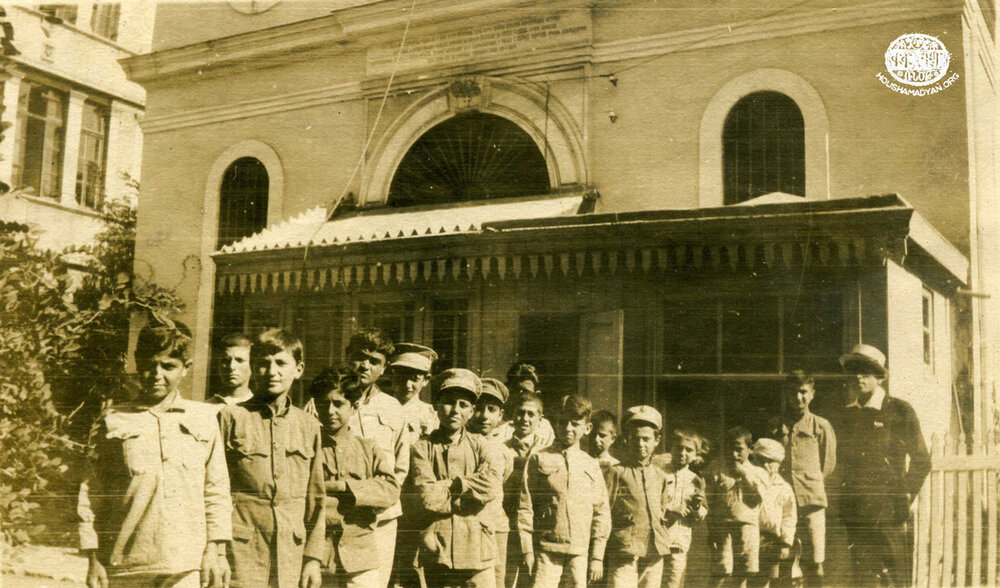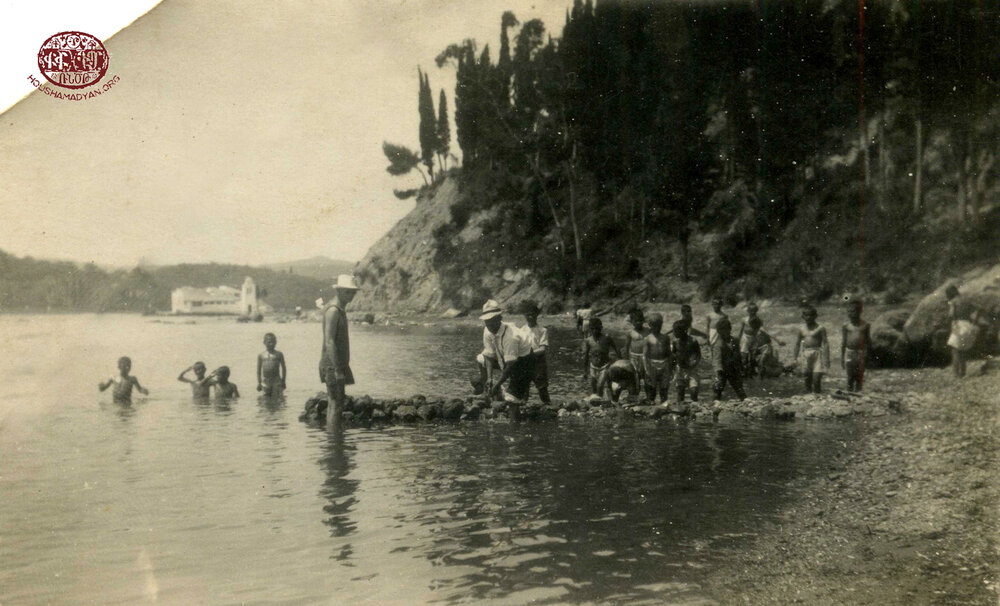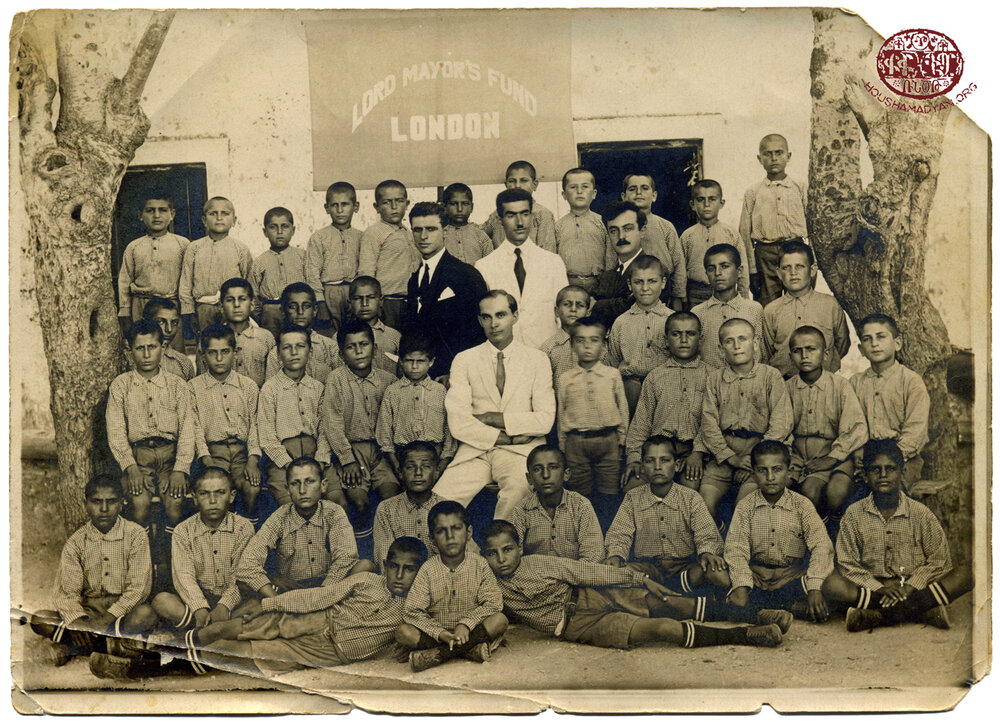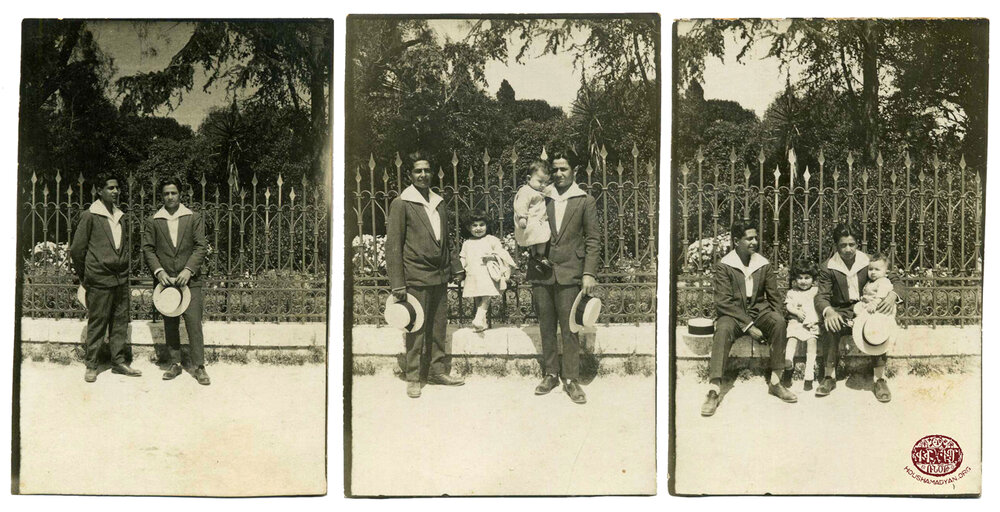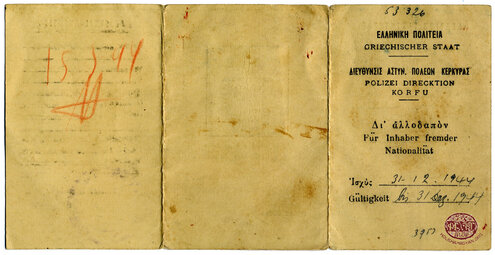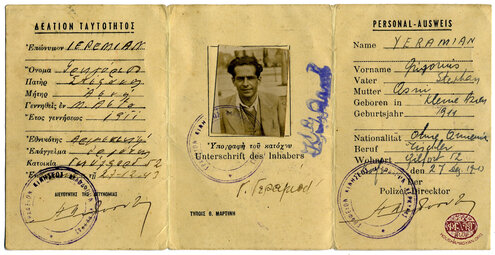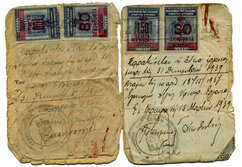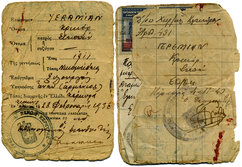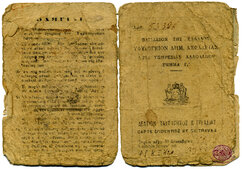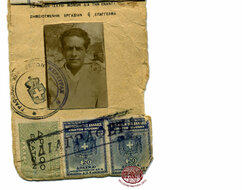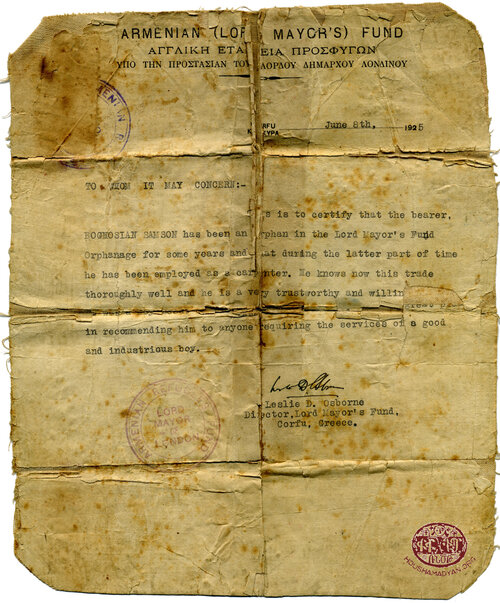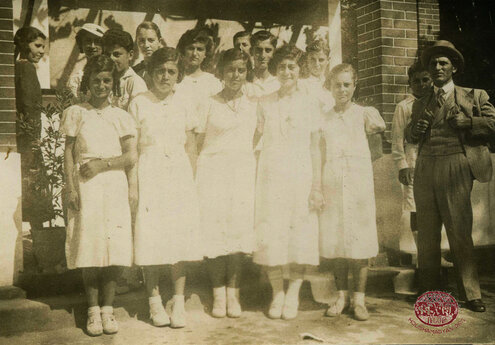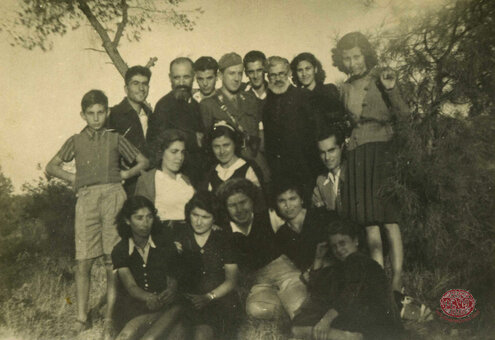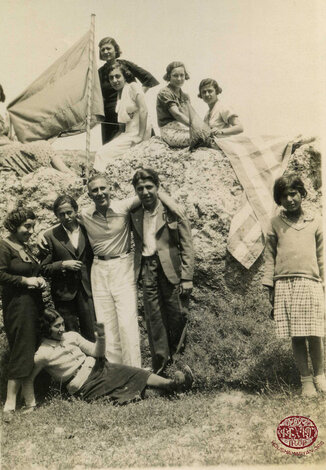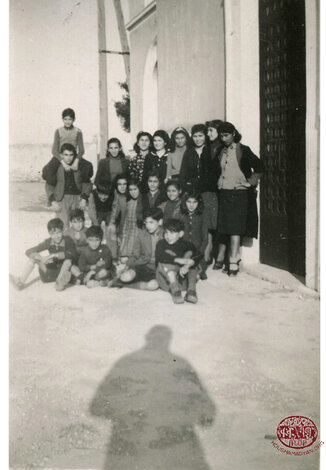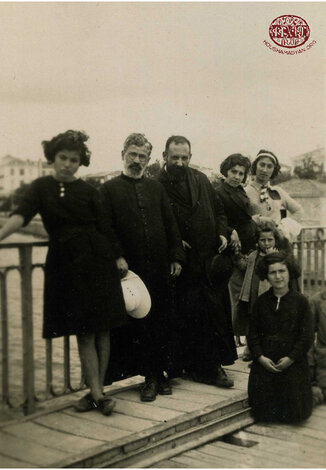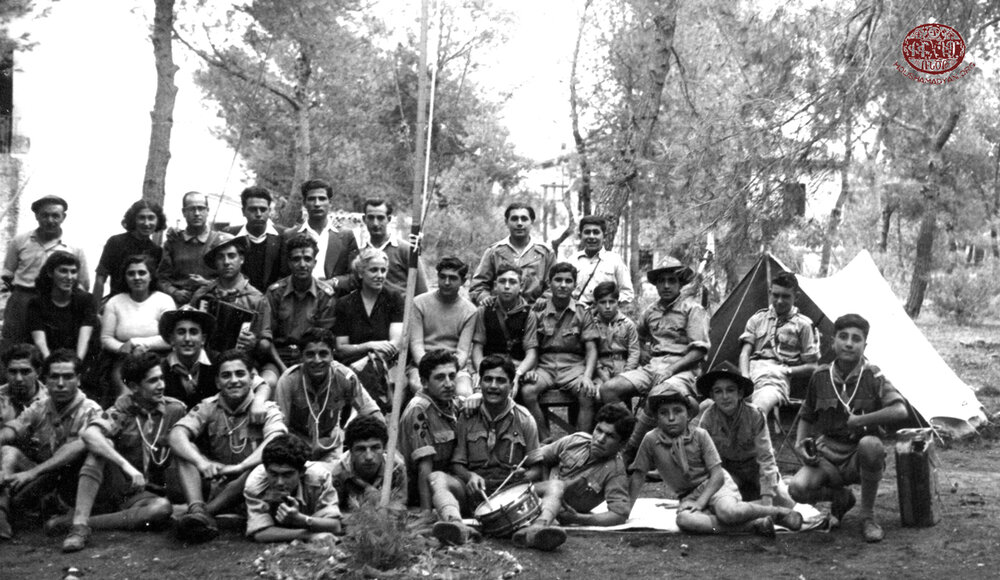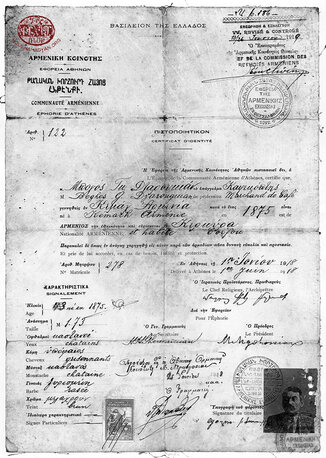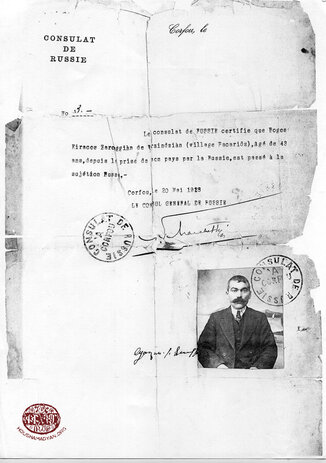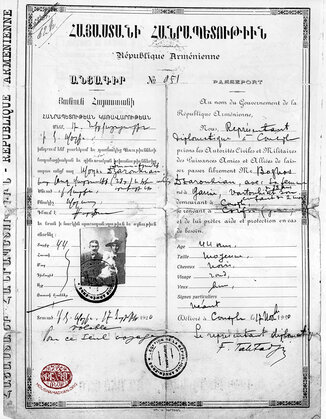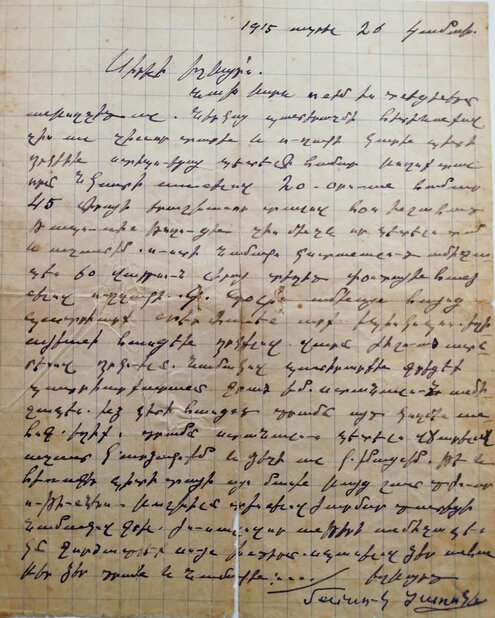Nounia Yeramian Collection - Athens
17.03.2020, translator: Hrant Gadarigian
These artifacts of memory were collected during the Houshamadyan workshop held in Athens on November 30, 2019. This page was produced in collaboration with the Athens periodical Armenika and the Hamazkayin Union.

Nounia's father is Krikor Yeramian, and her mother is Melineh Yeramian (néeVosganian), both from Izmit (Nicomedia). Krikor's parents are Sdepan and Azniv. Krikor also had a brother, Haroutiun. Krikor’s uncle's name was also Haroutiun.
Melineh's mother was Yeghisapet Vosganian (née Der Nersesian) and her father was Israyel Vosganian. They had three children: Haroutiun (born 1900), Nounia (born 1908) and Melineh (born 1916). Yeghisapet had three brothers, Krikor, Onnig, and Nerses. Yeghisapet’s father was Hagop Der Nersesian, and her mother was Yeranouhie (née Ghazarian).
Nounia’s maternal side of the family lived in Izmit. The grandfather, Israyel Vosganian, was a merchant who owned a shop in Izmit, as well as in Smyrna. Israyel and Yeghisapet's children were highly educated. Their son attended a German boarding school in Constantinople. Nounia attended an Armenian school in Izmit. They were fluent in Armenian, Greek, Turkish, and French.

In Izmit, Hagop Der Nersesian, the maternal grandfather of Nounia, was a high-ranking official in the economic sector. The exact nature of the post remains unclear, but Hagop kept various government seals in his possession, which we present here.
During the 1915 Genocide, the Vosganian and Der Nersesian families were deported. The survivors settled in Smyrna, where the Vosganian family already had a shop and a home. They remained here until 1922. After the disaster in Smyrna, the family settled as refugees on the Greek island of Mytilene/Mitilini. The family of Melineh and Israyel were here, Melineh's mother Yeghisapet, as well as Yeghisapet’s brothers, Onnig and Krikor.
Yeghisapet’s younger brother was Nerses. We know that he attended an Ottoman military school. During his service during World War I, he was awarded a medal. A family story recounts that jealous army buddies poisoned Nerses during a party, which resulted in his death. It must have happened in 1917 or 1918, probably in Constantinople.

In 1915, Nounia’s paternal (Krikor Yeramian) family was also deported. During the years of exile, Krikor loses his mother, Azniv. Krikor Yeramian’s uncle, Haroutiun Yeramian, was hanged in Izmit in 1915. Krikor, his brother, Haroutiun, and his father, Sdepan, survived the Genocide and settled in Constantinople. Sdepan dies here too. The two brothers were very young, so after the First World War they were admitted to the Lord Mayor's Fund orphanage in Constantinople. Prior to the Kemalists' arrival in Constantinople, they were transferred to an orphanage on the island of Corfu (Kerkyra) in late 1922 or early 1923. Here, the two brothers are separated. Krikor remains in Corfu, and Haroutiun attends the newly opened Melkonian School in Cyprus. He graduates from this school, does some teaching in Cyprus, then immigrates to Soviet Armenia. He marries and has two children, named after his parents, Azniv and Sdepan.
As for the Vosganian family who settled in Mitilini, they lived a difficult life as refugees. Israyel Vosganian had managed to get some of his merchandise from his shop in Smyrna to the island. He buys a donkey on the island and travels from village to village selling his wares.
In Mitilini, the family settled in a wooden house that formerly belonged to a Turkish family. Many immigrant families lived in the same house. A room was allotted to each family. One day a fire breaks out and the whole house becomes a fiery blaze. The Vosganians save precious little of their belongings. One of them was Nounia’s earring, shaped in the Armenian letter “N” (Ն), which is displayed on this page.
Medal that belonged to Onnig Der Nersesian, uncle of Melineh Yeramian (née Vosganian), Nounia’s mother. Onnig was a member of Izmit’s Armenian marching band. On one side of the medal we read, Parek [ordzagan] Ung [erutiun] 1914” (Benevolent Society). The other side reads, “Mrts [anag] fanfari, O.D. Nersesian (Marching Band, O.D. Nersesian).

The Vosganian family remained in Mitilini until the 1930s. The first to leave the island is Melineh's eldest brother, Haroutiun, who moves to Athens. Shortly afterward, the rest of the family joins him.
Krikor Yeramian stays in Corfu, even when the orphanage closes in 1925. He and his friend, Krikor Mkhigian, are adopted by Armenag and Ashken Ormanian. During the years of the orphanage, Krikor Yeramian is taught furniture making, so he opens a furniture factory in Corfu. Immediately after World War II, when the Great Repatriation (Nerkaght) movement to Soviet Armenia begins, Krikor decides to join up. He travels to Athens to register and meets Onnig Der Nersessian at the Armenian Diocese. Onnig is working as a secretary there. Onnig is the brother of Yeghisapet Vosganian (nee Der Nersessian), who was a compatriot of Krikor’s from Izmit. The two families knew each other in their hometown, Izmit. After this meeting, Krikor's plans change. He marries Melineh Yeramian, the daughter of Onnig’s sister. In 1948, the newlyweds depart for Corfu where their two children Nounia and Azniv are born.

Der Nersesian and Vosganian families
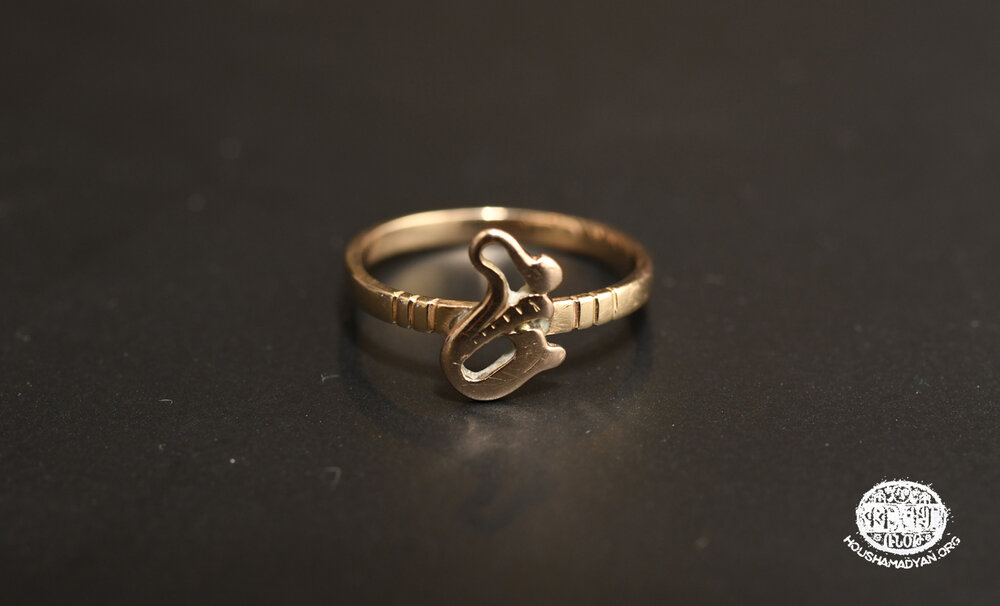

Armenian orphans of Corfu/Kerkyra: Images from the photo album of Krikor Yeramian
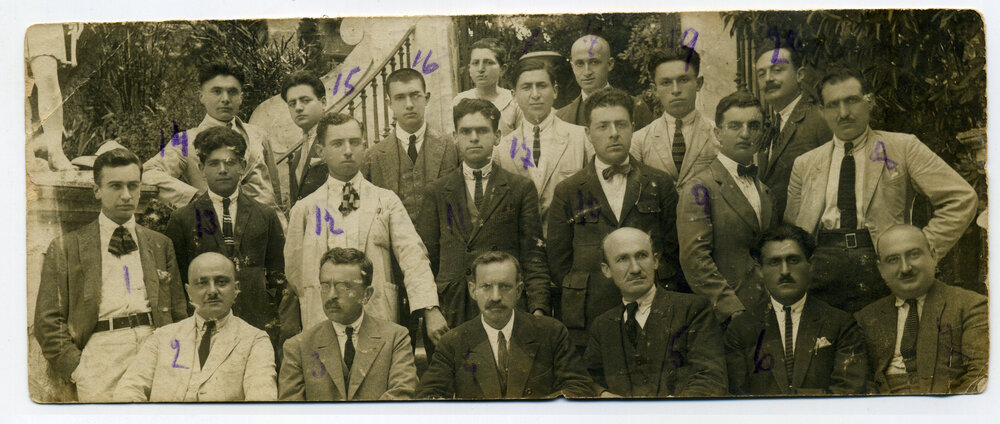

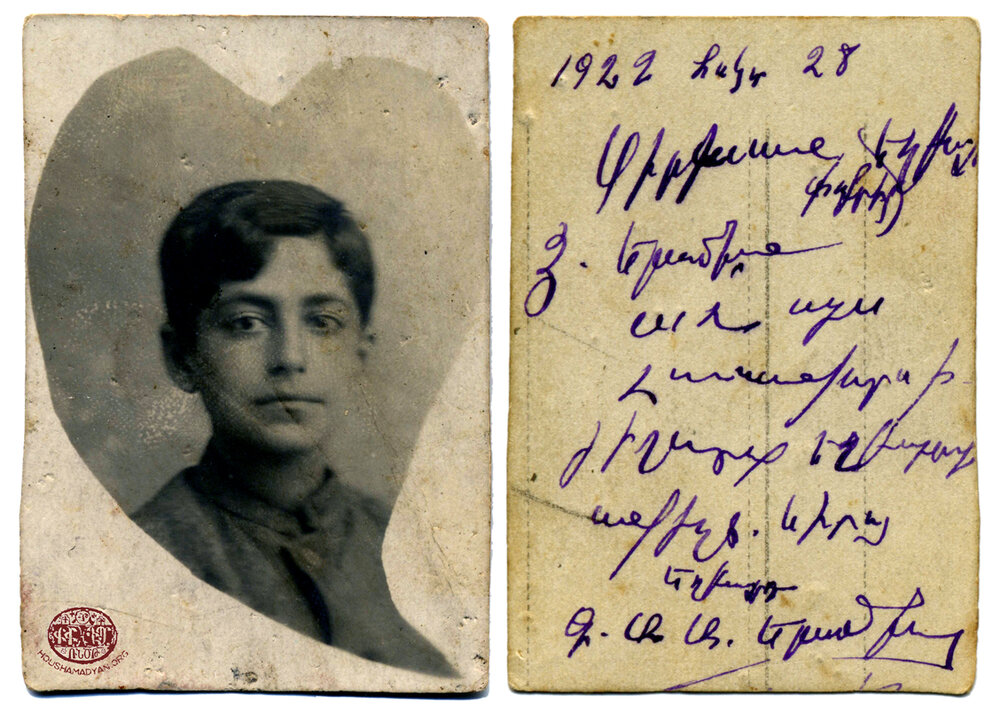
1. N. Seyisian - an Armenian orphan of the Lord Mayor’s Fund orphanage. Seyisian gifts the photo to Krikor Yeramian. The photo is dated November 15, 1922; Constantinople. In other words, before the orphanage was moved from Bolis to Corfu.
2. Vahram Parseghian - An Armenian orphan of the Lord Mayor’s Fund orphanage. He gifts the photo to Krikor Yeramian.
3. An Armenian orphan of the Lord Mayor’s Fund orphanage; name unknown. Gifts the photo to Krikor Yeramian. October 14, 1922.





In Athens. From the photo album of Nounia Vosganian
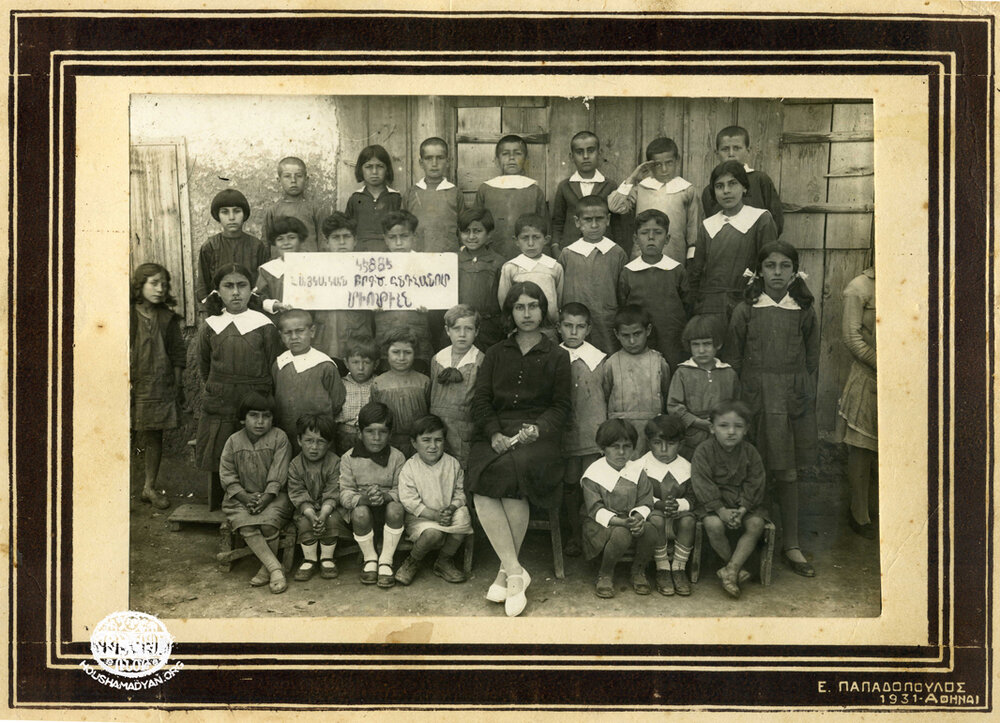
A group photo of Armenian Catholic School pupils. The school probably received assistance from the Armenian General Benevolent Union (AGBU). Thus, on the left we see pupils holding a banner that reads “Long Live the Armenian General Benevolent Union”. The woman seated in the middle of the front row is the school’s teacher Nounia Vosganian (Melineh’s sister). Nounia Vosganian is the aunt of Nounia Yeramian, who allowed us to use the items you see on this page.
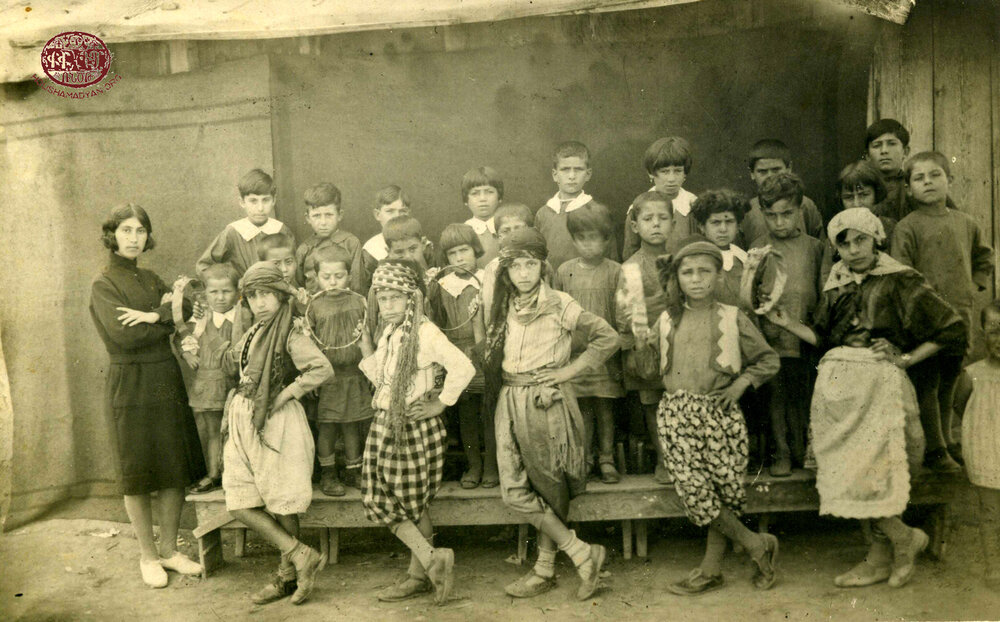
1. Athens; July 8, 1937. Armenian girl pupils standing in front of the Zappeion, a building in the National Gardens of Athens.
2. Greece, 1940-1942. Mkhitarist Father Hovsep Khantsian is seen standing, second from the right (with a white beard and glasses). The person standing, fifth from the left, is probably an Italian soldier.
1. May 28, 1936. Armenian tricolor and the Greek flag in the village of Kiourka, not far from Athens. Melineh Vosganian (later Yeramian) is seen standing on a boulder on the extreme right. Seated on the ground is Nounia Vosganian.
2. Armenian pupils outside the Agia Varvara Church (Kokkinia or Piraeus). Standing, on the far right is the teacher Nounia Vosganian.
3. May 5, 1937. Chalkida. Second from left-Mkhitarist Father Hovsep Khantsian. On the right, at the far end, is Nounia Vosganian (with a white hair band).
Other items belonging to Corfu Armenians
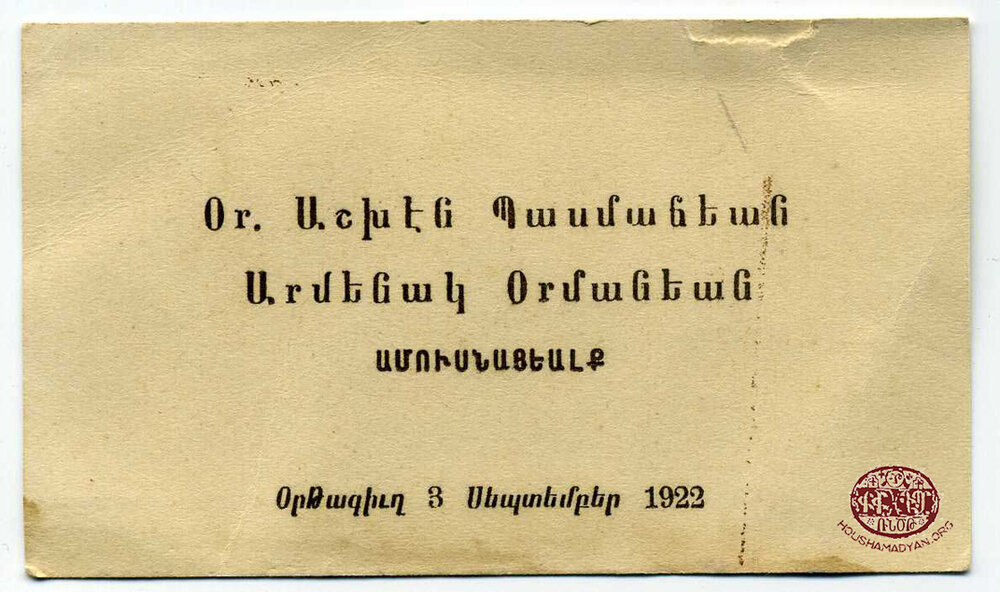
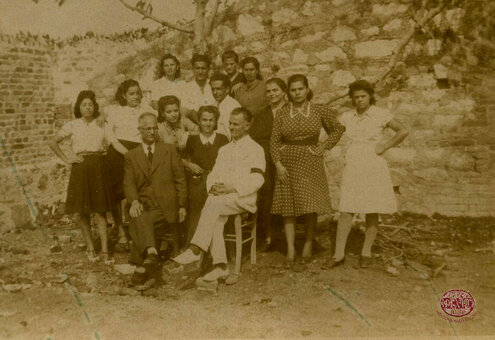
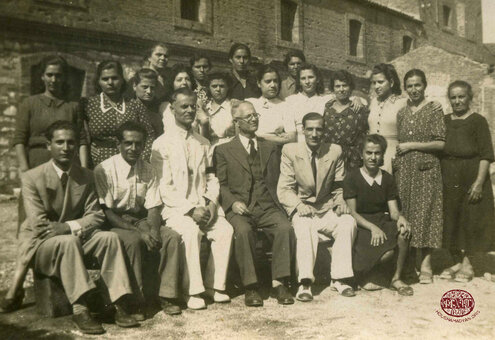
1. Boghos Dzarougian’s identity paper (in French and Greek) provided by the Neighborhood Council of the Athens Armenian Diocese. It notes that Dzarougian was born in 1875, in Gamakh, that he lives in Corfu and works as a coffee merchant. The ID is dated January 1, 1918.
2. A document that belonged to Boghos Dzarougian, who was a close friend of the Yeramian family. Therefore, the document is in this collection. The document bears the signature and stamp of the Russian Consulate in Corfu. The following is written in French: “The Consulate of Russia verifies that Boghos Giragos Dzarougian, born in Yerzinga (village of Pakarij) is 43 years-old and that he became a Russian subject after his country came under Russian domination. Corfu, 20 May 1928.”
3. The Republic of Armenia (RoA) passport belonging to the family of Boghos Dzarougian that was issued by the RoA government’s Constantinople representative on November 17, 1920. The document calls on all appropriate bodies to allow free passage to the family (Boghos Dzarougian, his wife Vartouhie and their two-month child).
A letter written by Manoug Dzarougian to his brother, most likely to Boghos Dzarougian. The letter is dated 26 April 1915, Gamakh. He writes that he has been conscripted into the Ottoman Army and that he’ll be sent to Garin/Erzurum. He expresses the hope that by paying the bedel-i askeri (a tax which was payable by non-Muslims who would have been eligible for conscription) he can receive an exemption. Thus, he asks his brother to send him sixty Turkish lira via Constantinople Patriarch Zaven.

